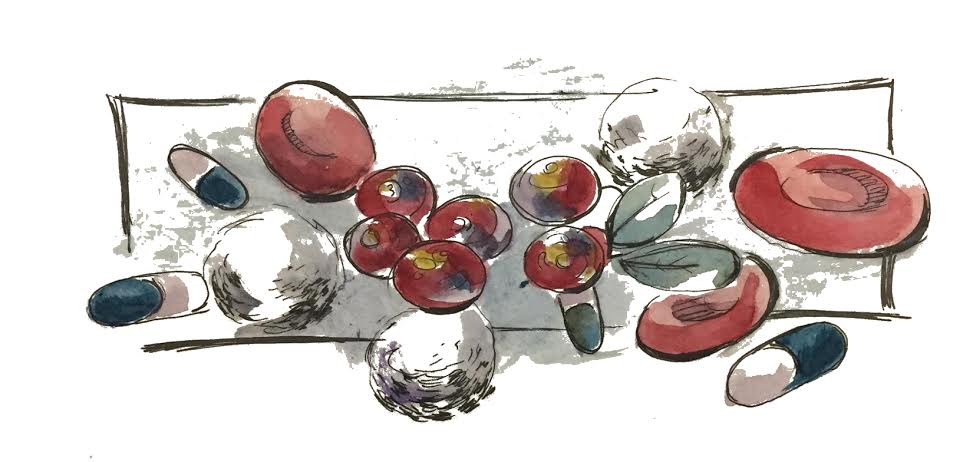
A vodka cranberry or two on a Friday night may seem like good clean fun, but a new Yale study suggests that moderate alcohol consumption may even carry an added benefit: extra antioxidant production.
“Higher levels of bilirubin, a known antioxidant, are associated with a lower risk of many diseases,” said Stephanie O’Malley, professor of psychiatry at Yale and principal author of the study. “Low levels of alcohol consumption, too, [have] been associated with decreased risk of some diseases. But the two haven’t really been put together until now.”
Smokers and non-smokers were given blood tests and provided between one and three vodka cranberries — three parts sugar-free cranberry juice to one part vodka. The study suggested that the consumption of the drinks is related to a significant increase in serum bilirubin, an antioxidant produced by the breakdown of red blood cells in the liver.
While this relationship is highly preliminary, the study helps to explain a commonly observed phenomenon where moderate alcohol use is related to a decrease in deadly diseases, such as Alzheimer’s, various cancers and heart disease.
The findings from the study are particularly useful given the difficulty until now in explaining that phenomenon, said professor at the Harvard Medical School and epidemiology researcher at the Beth Israel Deaconess Medical Center Ken Mukamal.
“The more different ways that we think there might be a benefit, the more robust this claim is, that alcohol produces benefits,” he said. “So if we think we might be wrong about one way, if there are five or six or seven mechanisms that point in the same direction, we can be much more confident in our assertion that alcohol can produce some benefit.”
In other words, this hypothesis regarding bilirubin not only provides a new explanation for alcohol’s effects on humans, but also helps support existing research suggesting that these health benefits are significant. Mukamal added that the benefits have been linked to the consumption of as little as half a standard drink each day.
He noted that health benefits caused by alcohol have been explained by everything from the benefits of good cholesterol to alcohol’s blood thinning properties. But, he said, these relationships do not entirely account for the health benefits reflected in past studies. The study, then, helps to explain some of what had not been accounted for in the past.
If these preliminary findings are supported by future studies, the question would remain if this increase in serum bilirubin is necessarily a good thing for the body, something that can only be discovered through extensive and broad research, Mukamal said.
The antioxidant properties of bilirubin do not necessarily mean it is a wholly positive actor in the body, said Robert Swift, professor of psychiatry and human behavior at Brown.
“Vitamin E is another antioxidant, and some people take it as a supplement,” he said. “It may actually prevent against heart disease, but it increases lung cancer in smokers. So, on the one hand, an antioxidant might be good for one organ system, but it could be deleterious in another organ system.”
Babies with high bilirubin, for instance, need treatment with high-powered lights to eliminate some of the chemical. On the other hand, adults with Gilbert’s Syndrome, a genetic variation affecting 5 percent of the U.S. population, are markedly less likely to develop heart disease, Swift said.
“The question remains what about low doses of alcohol is cardioprotective and protective against Alzheimer’s,” said Swift.
The study did not recommend anyone increase their alcohol consumption. Rather, it established a relationship between consumption and the production of one antioxidant whose benefits pale in comparison to the negative effects of alcohol poisoning.
Mukamal noted that while alcohol may be protective against heart disease, other research suggests that alcohol may increase the risk of breast cancer in women.
“And even if one drink is good, six are not better,” he said.
Individuals must be 21 years old to drink in the state of Connecticut.
Correction: Feb. 18
A previous version of this article misstated the recipe for the vodka cranberries used in this study. The drink was made not with four parts vodka to one part sugar-free cranberry juice, but rather three parts cranberry juice to one part vodka.







